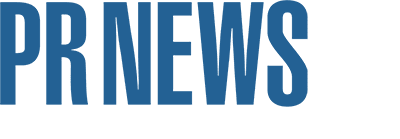
The most powerful AI tools aren't autonomous content factories, they're amplifiers for skilled communicators. As content creation becomes easier for everyone, communications professionals have an opportunity to elevate their strategic thinking and creative output. The thing is, we need to rethink what success looks like in this new landscape.
The past year has revealed a consistent pattern while working alongside communications and marketing teams at major organizations implementing AI tools: the standard metrics just don't capture what's really happening. The magic isn't in how many people use the tools or time saved. It's in how the tools are transforming the team and work itself.
Instead, PR pros need a measurement framework that captures both the quantitative and qualitative dimensions of AI's impact—one that aligns directly with an organization’s goals. Here's how to build that framework.
Connect measurement to communications strategic objectives from day one
The most compelling metrics demonstrate how AI advances an organization's strategic priorities. If the company goals emphasize brand consistency, highlight improvements in voice adherence from using AI writing tools. If audience engagement is critical, showcase metrics like increased click-through rates or reduced bounce rates on AI-enhanced content.
For example, a healthcare company aiming to position executives as thought leaders could measure AI's impact through increased publication frequency, faster response to healthcare trends like value-based care, and resulting improvements in audience engagement and speaking invitations.
This strategic alignment transforms technical metrics into meaningful business value. Leadership teams respond most enthusiastically when they can see how generative AI adoption directly supports broader business objectives beyond just productivity gains.
In a perfect world, a generative AI adoption strategy would start by evaluating a team’s overall strategic objectives, then identifying the areas where generative AI tools can make the biggest positive impact on them.
Build a balanced measurement framework
Beyond the obvious adoption metrics, a framework should include:
Time Saved & Reinvested: Don't just track time saved, measure where that time gets reinvested. Are team members spending more hours on strategic thinking, relationship building or creative development? This shift from tactical execution to strategic work often represents AI's greatest contribution.
Quality Impact Scores: Measure improvements in content effectiveness through:
- Reduction in revision rounds needed before approval
- Increase in first-draft acceptance rates
- Brand voice consistency ratings from stakeholders
- External engagement metrics for published content
Human Satisfaction & Experience: Survey both content creators and stakeholders about perceived quality, creativity and satisfaction. Ask specifically whether team members feel their work has become more meaningful and strategic since integrating AI tools.
Standardize measurement across platforms
With multiple AI tools potentially in use (Microsoft Copilot, ChatGPT, Claude, Gemini), standardize your measurement approach. Create consistent questions that work across platforms:
- "How has [tool name] impacted your overall productivity?"
- "How comfortable are you using [tool name] in your daily tasks?"
- "On average, how much time does [tool name] save you per day?"
This standardization enables meaningful comparisons regardless of which tool generated the results.
Look beyond efficiency to transformation
Watching communications professionals transform their relationship with AI tools over time can be genuinely inspiring. In my experience, with the right support and training, initial team skepticism around adopting AI tools gives way to enthusiasm as they discover they can tackle less-rewarding projects faster and focus on the aspects of their work they enjoy the most.
For example, several of my clients with a meaningful measurement framework in place have reported a significant increase in job satisfaction across the team, with team members citing "more time for creative thinking" and "less time spent on repetitive drafting" as benefits. For others, it has helped them feel more confident in their work, including the genuine swagger that comes from knowing the tools, a boost to their morale and the culture.
Ultimately, AI's greatest value in communications isn't about doing the same work faster. It's about enabling skilled professionals to elevate their craft, and professional selves, in ways they couldn't before. By capturing these dimensions in your measurement framework, you'll not only demonstrate ROI, but guide implementation toward truly enhancing your team's capabilities.
Samantha Stark is founder and chief strategist of Phyusion, a communications innovation consultancy dedicated to transforming how teams operate, create content, and engage audiences using generative AI. She is on the Board of Trustees for the Institute for Public Relations and serves as Director of the IPR Digital Media Research Center.
